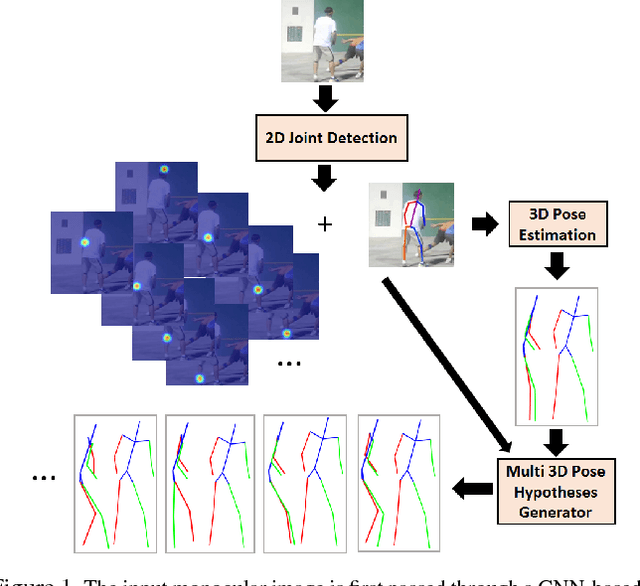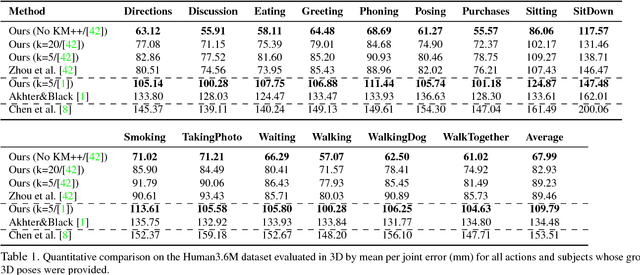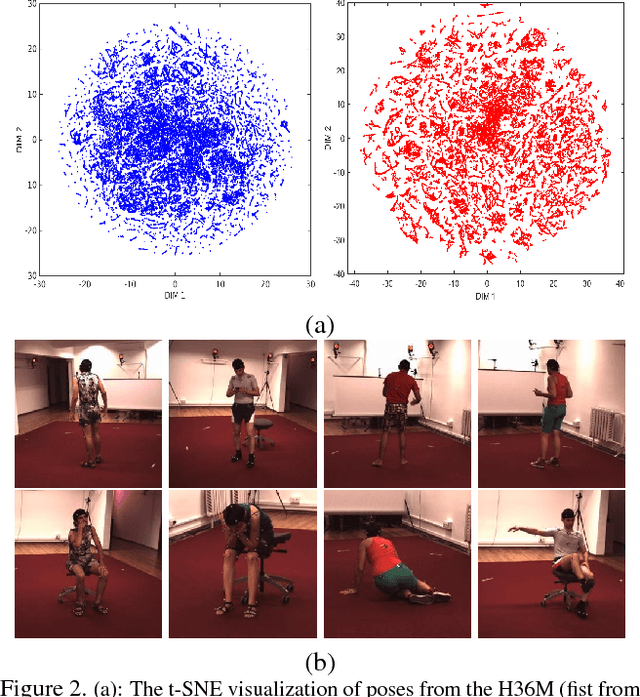Generating Multiple Diverse Hypotheses for Human 3D Pose Consistent with 2D Joint Detections
Paper and Code
Aug 20, 2017



We propose a method to generate multiple diverse and valid human pose hypotheses in 3D all consistent with the 2D detection of joints in a monocular RGB image. We use a novel generative model uniform (unbiased) in the space of anatomically plausible 3D poses. Our model is compositional (produces a pose by combining parts) and since it is restricted only by anatomical constraints it can generalize to every plausible human 3D pose. Removing the model bias intrinsically helps to generate more diverse 3D pose hypotheses. We argue that generating multiple pose hypotheses is more reasonable than generating only a single 3D pose based on the 2D joint detection given the depth ambiguity and the uncertainty due to occlusion and imperfect 2D joint detection. We hope that the idea of generating multiple consistent pose hypotheses can give rise to a new line of future work that has not received much attention in the literature. We used the Human3.6M dataset for empirical evaluation.
 Add to Chrome
Add to Chrome Add to Firefox
Add to Firefox Add to Edge
Add to Edge